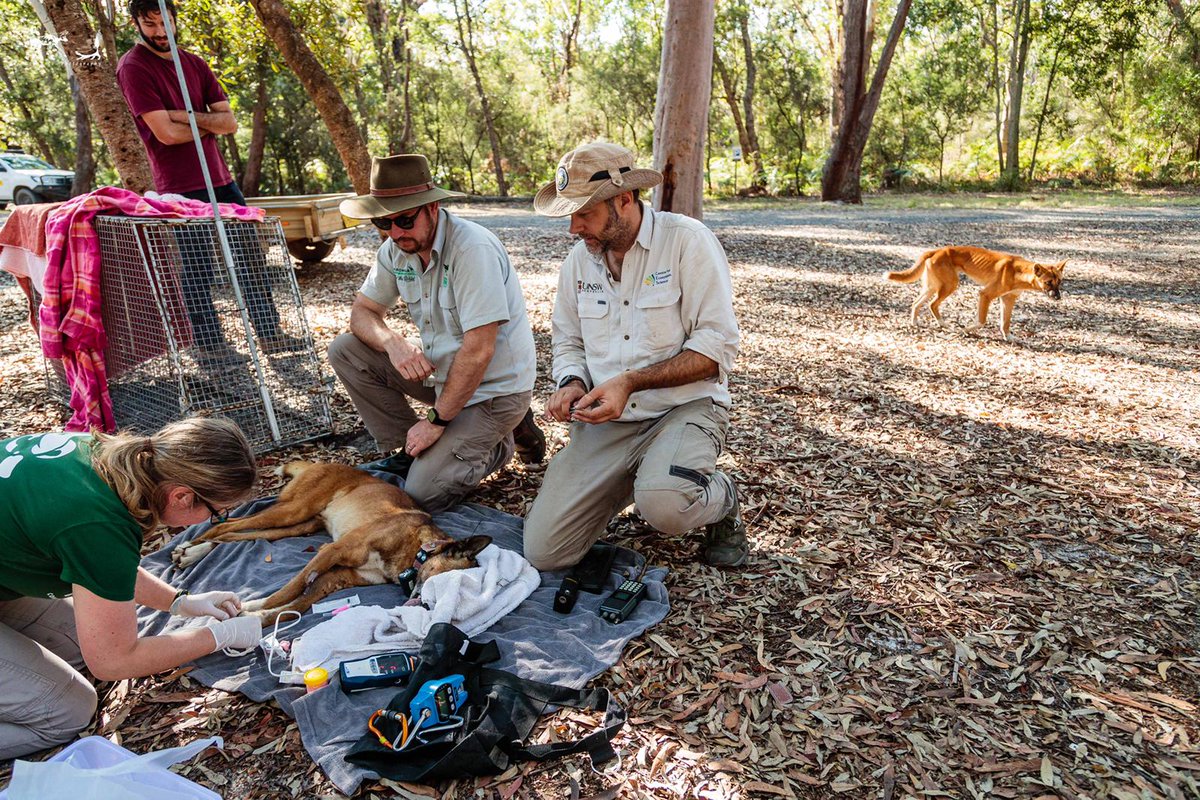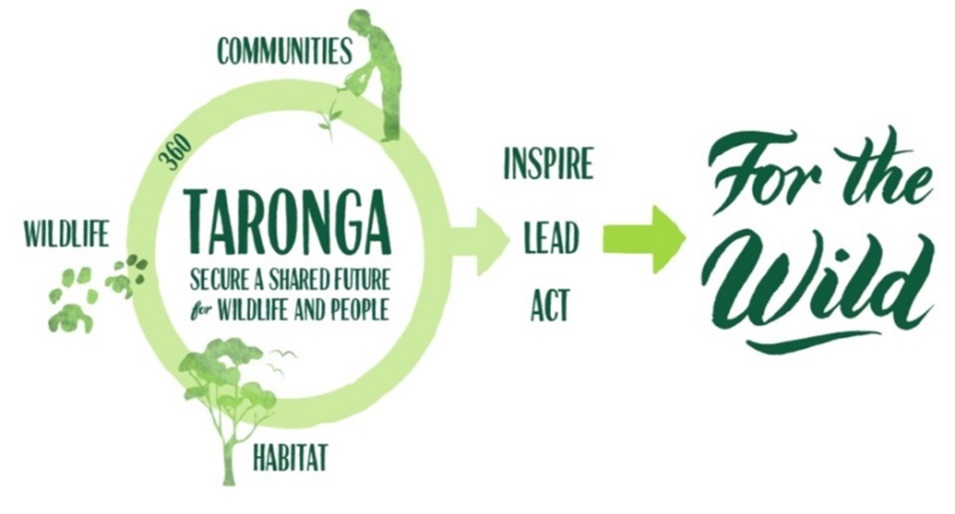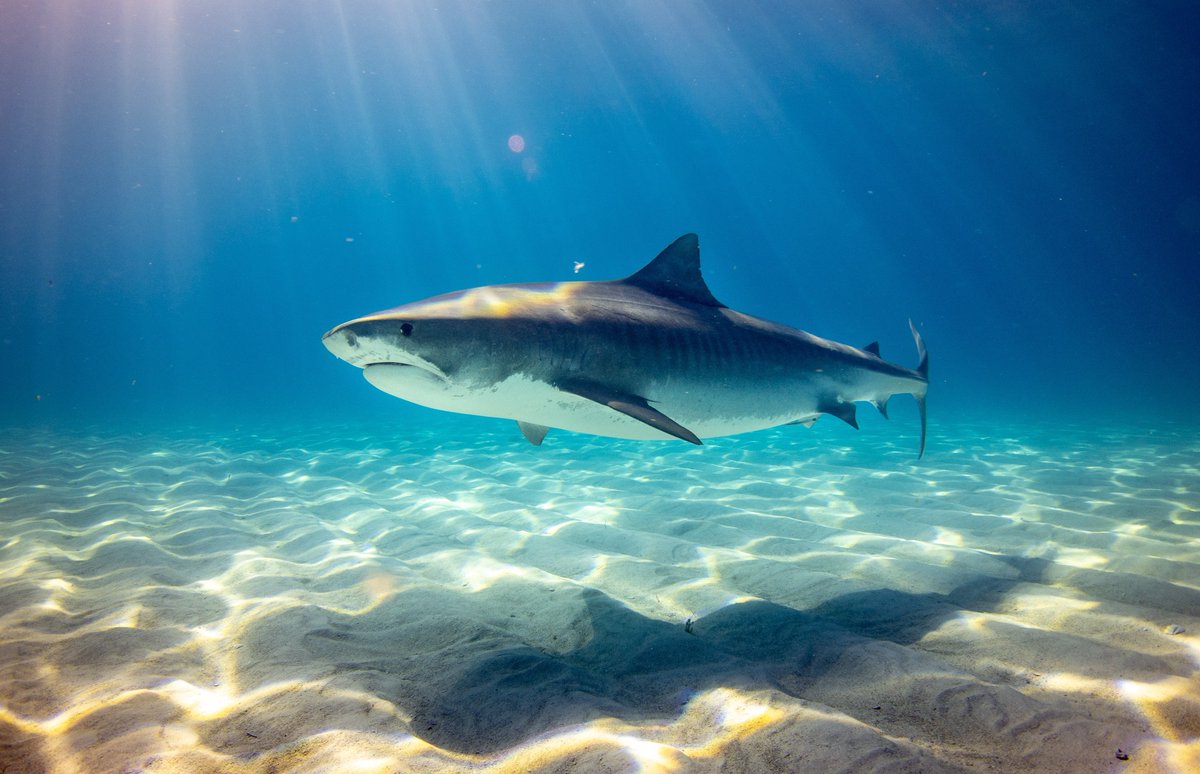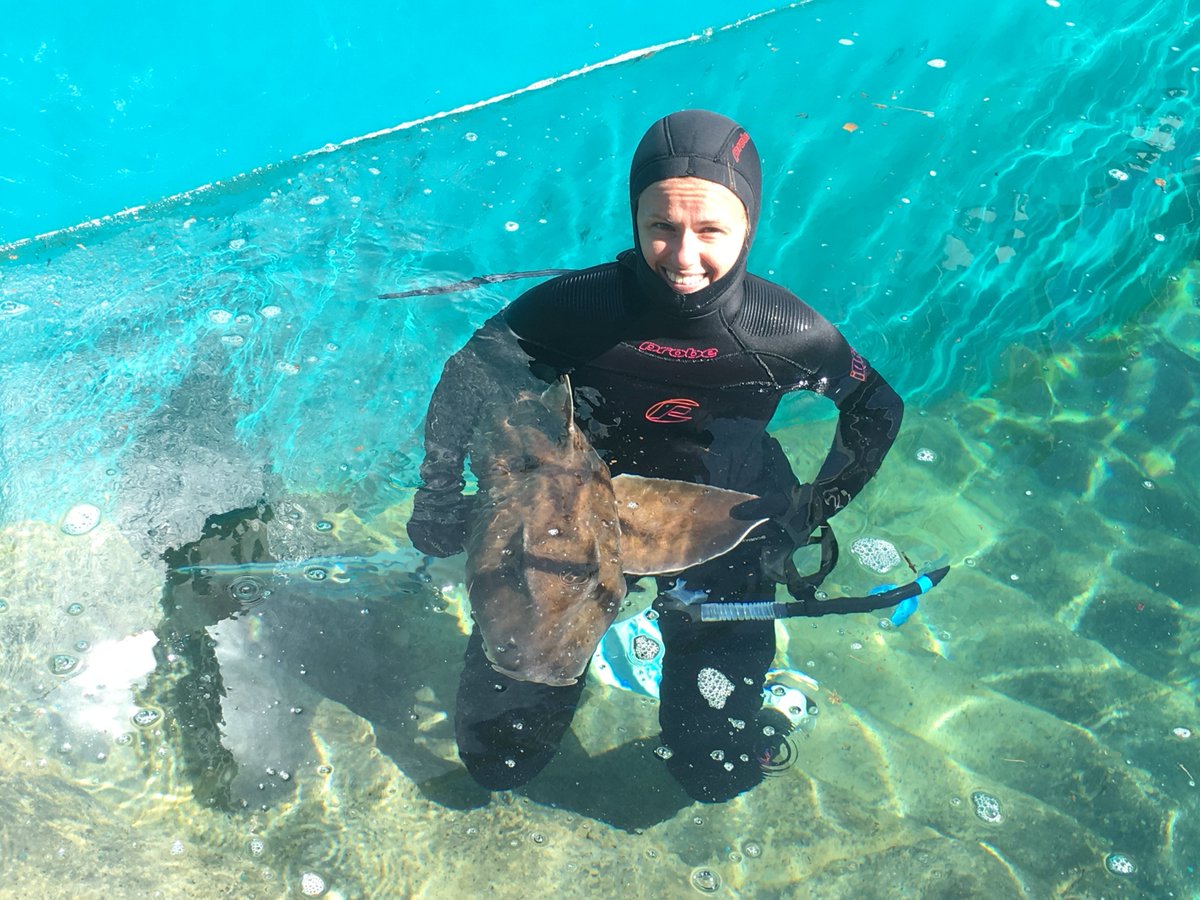
Through the Myall Lakes Dingo Project, Taronga’s #science team are quickly developing an understanding of the #dingo population. #MyallLakesNationalPark, a beautiful coastal area, has a very pure dingo population of high #conservation value. #ScienceWeek PC: Bobby-Jo Vial 

Using GPS #radiocollars to keep up with packs, and a comprehensive photo identification library, the team tracks the movements and fortunes of many individuals across several packs. #Dingo pelage patterns, particularly the socks and chest blaze, identifies individuals. 

We draw these distinctive features on our #dingo ID cards, and use photograph reference photos to identify them. The team are working on making an identikit publicly available, but for now here’s an example for UOM1701 (aka “Bombah Boy”), the dominant male in the Mungo Brush Pack 

Here’s an example of a #dingo photo ID card for UOM2001 (“Skinny Boy”), a subdominant in the Mungo Brush pack. His name reflects the fact that #dingoes tend to be quite lean, but their body condition fluctuates hugely, & he’s filled out recently. DO NOT FEED WILD DINGOES! 

If you do see a #dingo or other #carnivore in the Great Lakes region or around #MyallLakesNationalPark, please complete a sightings record here: ee.kobotoolbox.org/x/dGKgp9ak. You can also use this QR code to report a sighting: 

#Dingo sighting records are extremely valuable to the research, particularly when they include photos and location information. They allow us to determine and monitor pack composition and track their movements. PC: Bobby-Jo Vial 

We have GPS #radiocollars in some packs to record movement in response to our experiment, to map home-ranges, and keep track of them in general. Collars are carefully fitted to #dingoes under anesthesia by an experienced vet, and monitored frequently. PC: Bobby-Jo Vial 

GPS #radiocollars and #cameratraps also provide insights into often unseen #dingo behaviors. Here WTF1501's pups follow the dominant male out of the den site #tech4wildlife
Some of the #dingoes in this project have ranges that overlap with towns. This leads to #HumanAnimalInteractions, and data informs #WildlifeManagement and human-behaviour management by our partners on the ground, @NSWDPIE and MidCoast Council. PC: N.Colman 

Sadly, #radiocollars and sightings reports also provide insights into problematic human behaviour resulting in #HumanWildlifeConflict. Feeding wild #dingoes is illegal & leads to behaviour deemed a public safety risk, with lethal consequences for the dingo. DO NOT FEED DINGOES! 

In understanding #dingo #ecology, #HumanAnimalInteractions, #dingomanagement, and establishing collaborations with key stakeholders, the Myall Lakes #Dingo Project embodies Taronga’s 360deg approach to conservation. 

The team have established a stakeholder working group, including @NPWSDPIE, MidCoast Council, community representatives, scientists, and Local Aboriginal Land Councils to advise and drive the #science. This puts management needs and cultural heritage at the heart of the program.
• • •
Missing some Tweet in this thread? You can try to
force a refresh












